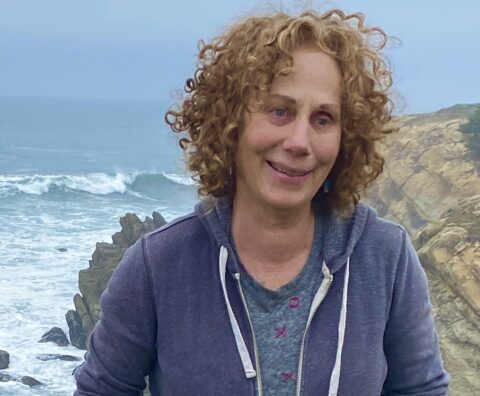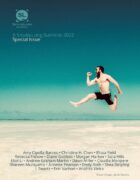As I was reading, I was struck by the vibrancy of colors in the first half of this essay, especially with the Crayola-themed cake. Your previous publication in SmokeLong, “What I Wore,” also utilizes color to relay the vibrant images of Barbie’s clothes. Can you discuss the role of color in your writing, particularly in this essay?
I use color to help shape mood in writing and to develop character. In “What I Wore,” Barbie is acutely aware of the exact shade of every outfit she wears, something Midge would barely notice. As a kid, I loved looking at my mother’s oils and acrylics—the seemingly endless shades of primary and secondary colors. And with all those choices, she was still mixing colors on her palette, trying intensely to get the colors just right. Which, of course, is what my almost ex-husband was trying to do on the Crayola-themed cake. After his death, my surroundings appeared colorless and one-dimensional. It was bizarre and scary. Even when I looked at a canyon or the ocean, everything was flat and gray. I still hate that color. I surround myself with joyful yellows and oranges or soothing blues and greens.
One of the images that stayed with me as I read was the ice cream dribbling on your mother’s painting, which is immediately contrasted by the memory of your kids making ice cream with your ex. Can you speak a little bit more on how these two events play off of one another in your essay?
Ice cream was a big deal in our family. We took the kids out for ice cream often at a small neighborhood place and I still remember their favorite flavors: strawberry crush and bubble gum. I remember their bits of chewed-up gum on a plate, like tiny sculptures. We didn’t have a lot of happy family routines, but this was one of them. Writing this piece, I wanted to convey how ice-cream brought connection but how it also represented destruction. I wanted to place both fury and tenderness side by side.
The memories you’ve written flow seamlessly in this piece through the use of the dervish essay. What initially drew you to this style of writing?
I started writing this essay wanting words and ideas to unfold slowly. But flashes of memory quickly crowded my mind. They were like a horde of tiny people locked in a closet banging on the door, shouting, “Let me out. I want to tell my story.” After a few drafts, it was clear I needed the speed and intensity of the dervish form. I tried to mirror stream of consciousness, and I used repetition of images to move readers through the frantic energy.
Along this note, are there any other writing styles that you find yourself inspired by as of recently?
I’ve been rereading Claudia Rankine’s Citizen and Maggie Nelson’s Bluets. I love the hybrid writing in both. And Fatimah Asghar’s amazing If They Come for Us: Poems. She uses lots of hermit crab forms, such as “How We Left: Film Treatment” and “Script for Child Services: A Floor Plan.” I’m also recently inspired by Naoko Fujimoto’s graphic poems and the prose poems in Hala Alyan’s The Twenty-Ninth Year. I love that genres are increasingly blurred. And I love getting words on a page and then experimenting with different structures and styles. I’m working on a piece that is part screenplay, part prose poem, part Q&A, and part dervish essay. My students get excited seeing the huge impact that structure can have on a piece.
As you divulge your motherly feelings towards your ex’s girlfriend, I found myself curious if the two of you stayed in contact afterwards?
We stayed in touch for a year or two. She loved him deeply. I know this sounds weird, but I’m glad the two of them were happy together for at least a brief time.



 The SmokeLong Grand Micro Contest (The Mikey) is now an annual competition celebrating and compensating the best micro fiction and nonfiction online.
The SmokeLong Grand Micro Contest (The Mikey) is now an annual competition celebrating and compensating the best micro fiction and nonfiction online.